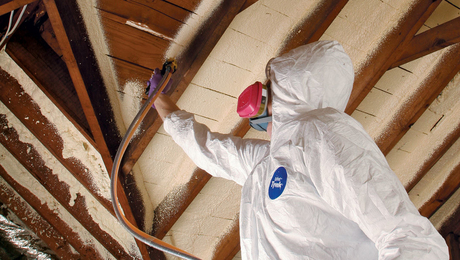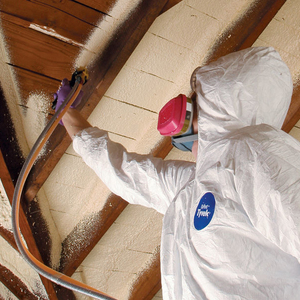Subfloor thickness and tile substrate recommendation/opinion?
I am planning on laying tile in a 40sqft bathroom and need some recommendations.
The home is a 1955 constructed central-PA ranch. The old flooring and underlayment has been removed so all that remains is the 4″ pine plank subfloor running on the diagonal over 16″ on center floor joists. There is a cast iron toilet flange that is still in good shape and the top of the flange is 1″ higher than the subfloor. I have 1/4″ durock cement board and 1/4″ thick porcelain mosaic tile sheets. I’m estimating that the 2 layers of thinset mortar will add 1/4″. So if I use 1/4″ plywood over the subfloor that would put the total flooring height at approximately 1″ and get close to flush with the toilet flange.
My question would be, is 1/4″ plywood over the tongue and groove plank subfloor going to be adequate?
Hope there’s enough info here. Thanks in advance.



















Replies
No.
1/4" serves no structural purpose. It never has any ratings. Use at least 3/8. More if you can.
You need some stiff plywood in there to limit the floor deflections. The cement board and 1/4 ply will not be sufficient, and the wood boards, being narrow, will not help much either.
The Tile Council of North Amereica (TCNA) has published standard floor structure combinations suitable for residential use. These are in their publication Handbook for Ceramic Tile Installation.
Tiles and grout are not waterproof. Bathrooms need some additional waterproofing membrane / coating for the floor and any shower enclosure.
Suggest 3/4 ply for the strength requirements, with DITRA membrane to provide waterproofing and isolation. This will meet the minimum requirements for TCNA standard F148
5/8 Ply and the backer board can also be used, and meets TCNA standard RH135, but additional waterproofing will be required before tiling.
Thanks for this. I didn't know anything about needing the waterproof membrane. I think I'll return the durock and go eith 3/4" ply with the Ditra membrane.
In looking at the Lowe's instruction page for laying waterproof membrane I saw they are sealing the edges with "Kerdi--Band". Would this only be necessary in a shower enclosure application?
The edges and seams should be sealed anywhere there is the possibilty of water penetration. In my book, if there is water going into the room, the floor should be sealed. Flooding toilets, overflowing sinks or tubs can put a suprising amount of water on the floor before you can do anything about it. Even kids having a bath can splash a lot. Baths, kitchens, and laundry rooms should be sealed as a matter of course.
Sealing the seams and floor to walls corners does not take much time or effort, just a little attention to detail.
Cheers,
I agree with the recommendation and dont worry if the tile floor is slightly higher than the flange you can either get a flange extension or use a thicker wax seal
mosaic over ditra
Ditra is a good product. However, with mosaic over Ditra there are manufacturer-imposed restrictions. Due to the waffle-like surface of Ditra, Schluter recomends a minimum 2" tile size. If that'll be a factor, you might want to reconsider the Ditra for another membrane.
Other than that, I'd recomend 1/2" ply underlayment over the subfloor planking. That'll give you 1-1/4" thickness for your subfloor and plank underlayment. Plenty good.
The Ditra will offer added protection for the tile installation and the Ditra/thinset/tile will add about a half-inch thickness on top of the roughly half-inch ply underlayment, bringing you to a total of roughly 1" added thickness.
The tiles in the mosaic sheets are 2" hexagonal.
As for the subfloor, my plan as of now is to screw the planks to the joists to sure them up (if that's unnecessary please let me know) and then lay the plywood perpendicular to the floor joists and screw it to the plank subfloor.
So then run sill seal around the perimeter. Trowel modified thinset over ply and lay the ditra. Cut the sill seal. Kerdi band the joints, wall transitions and at the bathtub surround with unmodified thinset. Lay tile with unmodified thinset.
Am I on the right track?
I read a few forum posts where people have used versabond modified thinset both under the ditra and tile. Anybody have any experience or words of wisdom there?
sounds fine...
I'm one of those that has used lightly modified and premium unmodified.
Because the small tile will have a lot of grout joints which means added opportunity for the modifiers to air dry, on a personal level I'd have no issues using a lightly modified thinset like Versabond to adhere the tile to the Ditra.
If you haven't already, I do recommend you review the Ditra installation handbook.
Edit to add:
If the planks need to be snugged up, certainly do so. Do be careful with screws. Old planking can be britle and crack when screws are driven, especially at the ends of the planks. Nails may be better, and even with nails, pilot holes may help at the plank ends.
Thanks for this and...
Would the versabond be suitable for the kerdi-band seal tape as well?
tile install
jzinn,
pre-drill the subfloor (1/8") and secure with screws (not drywall screws!) to the joists. Install 3/4" ply, predrilling and screwing,
and fastening to joists, then "fill-in" between joist. Install Ditra using 1/16" V-notch trowel & MODIFIED thinset.
Install edge sealing w/non-modified thin-set and Install tile w/NON-modified thinset onto Ditra,
do not use modified over the Ditra! The non-modified will take a little
longer to set up,but will accommodate the moisture(water) on the tile floor better than the modified thinset. You can seal
the grout after it has cured for 10-14 days or whatever the brand sealer you use recommends.
Good luck!
Geoff
Why?
Why does unmodified thinset accommodate moisture/water on the tile floor better than modified?
I've been advised on other forums that using modified over the ditra for laying the tiles would void any Schluter warranty but also that with using 2" mosaic and giving it 3 or more days cure time before grouting would provide the polymers ample time to evaporate and cure.
I'm using urethane grout so it doesn't need to be sealed.
Si.
Yes.
I'm cutting my 1/2" plywood
I'm cutting my 1/2" plywood underlayment and found that the flange is not level. The front to back level pic is off so much because the pipe is higher in the back. Does this matter?
I've got about 1/2" from the underlayment to the top of the flange. The 2" hex tiles are 1/4" thick.
Any advice? Let me know of you need more info.
Edit: Never mind. I couldn't get the pics attached correctly.
Generally speaking, a standard wax ring should accommodate about a half-inch of tilt in the flange.
Look at the waxless seals.
Fernco and a few others make them.
They're essentially a flexible rubber boot that sticks to the bottom of the toilet, and they have a barbed boot slides inside the flange waste hole.
Nice thing about them is you can pull and reset the toilet without having to replace the waxless seal, where with a wax ring you have to replace it each time.
https://www.fernco.com/plumbing/wax-free-toilet-seal
I'm cutting my 1/2" plywood underlayment and found that the flange is not level. The front to back level pic is off so much because the pipe is higher in the back ...........
Guess you should have gone with the 3/4" ply as suggested.....
Also an excellent suggestion by Mongo to use a Fernco seal, they work great.
Why does unmodified thinset accommodate moisture/water on the tile floor better than modified?
As to your earlier question, modified mortar mixes have additives that give it more flexibility than non-modified, which is great when tiling over flexible subfloors/underlayments such as plywood, but once you install the Ditra (using modified thin-set) you no longer need those additives to keep the thin-set from flexing due to movement of the sub-floor. That's when the tile manufacturers recommend non-modified, similiar to an installation over a cement floor, such as a basement. Since the Ditra is water proof, any moisture on the floor will take longer to "dry-up" and the non-modified will be less affected by this "excess" moisture, which will typically be re-introduced on a daily basis from the occupants use, i.e. showering, shaving, etc... even if you're using urethane grout, and urethane grout is very un-forgiving during installation if your not right on the ball with cleaning up the excess, it sticks to everything, including the tile!!
Geoff